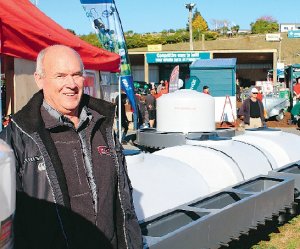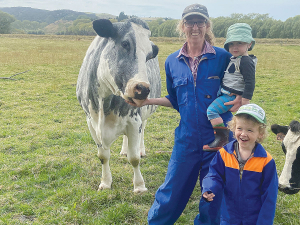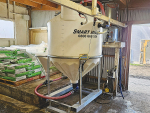Managing director Rob McInnes says the feeder’s 1200L capacity and ‘empty’ weight of 400kg makes this the largest commercial trialed milk feeder on the New Zealand market. It measures 7m long x 1.8m wide.
Farmers had asked the company for a 100-teat calf feeder, despite the issues of size, McInnes says. “Normally with our products we take an idea and produce it for the market. But this was something people asked for.”
Milk runs to the troughs from one of three 400L tanks made of UV-resistant polyethylene.
Milk Bar says while the trailer was a little difficult to engineer due to its size, they had some help from previous projects.
“The [galvanised steel] chassis is exactly the same as on the 6m long feed trains,” says McInnes. “But we built the feed trains with this feeder in mind.”
Troughs and tanks used on previous models are fitted to the new model.
McInnes says having three tanks allows farmers to get the correct amount of milk for three individual mobs of calves at one time instead of heading back to the shed between feedings.
“It also gives farmers the option of turning one side off if they’ve only got 40 or 50 calves at the end of a season.”
Many of the feed train’s features can also be found on the 100-teat feeder, says McInnes. These include a brake independent of the drawbar and an all-wheel-steer system.
This gives the unit a manoeuvrability not seen in trailed calf feeders half the size, McInnes says.
“A long trailer like that does cut in a lot if it doesn’t have all-wheel-steer. This makes life difficult if you have a narrow raceway or when you’re trying to manoeuvre around yards.”
A towbar at the back of the calf feeder means large-scale farmers with many replacements can attach more than one feeder to their vehicle.
McInnes says the size of the calf feeder is likely to rule out quads for towing; utes or 4WD farm utilities are preferable.
Tel. 0800 104 119
www.milkbar.co.nz















